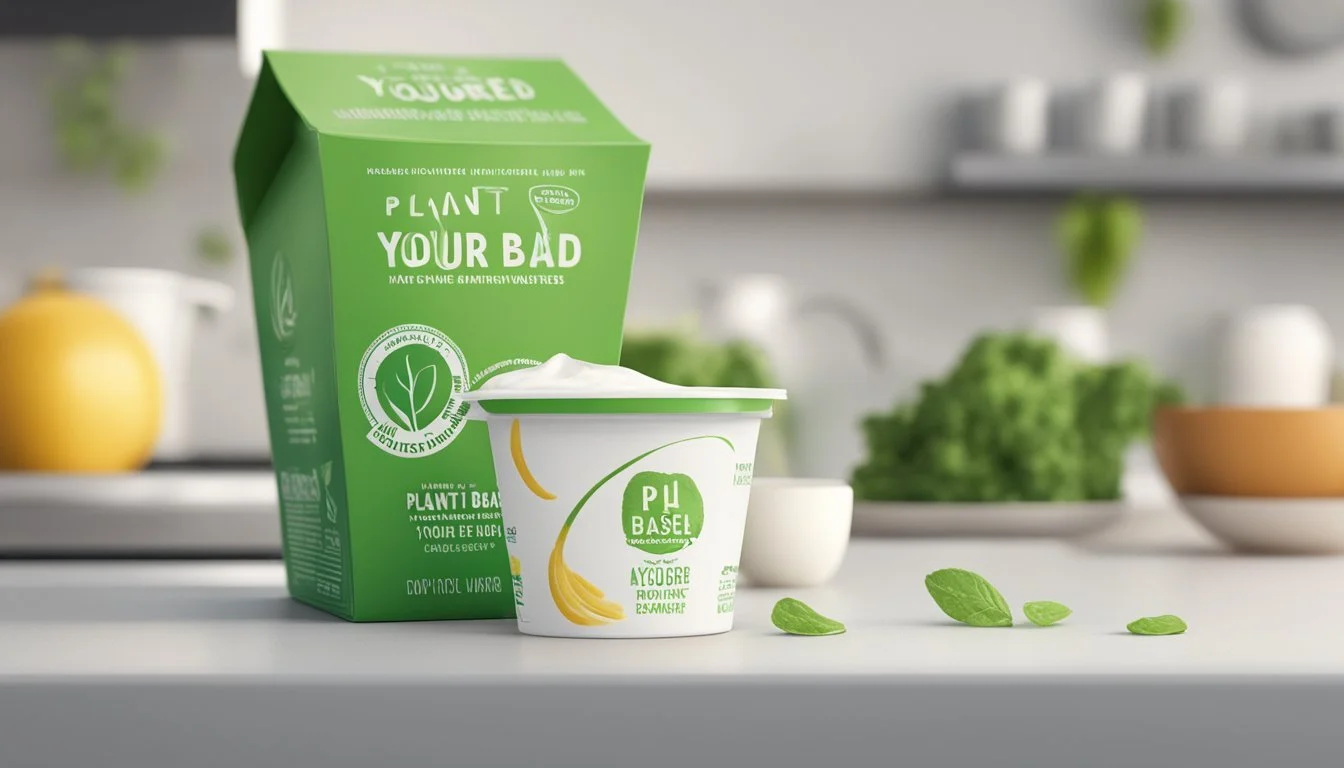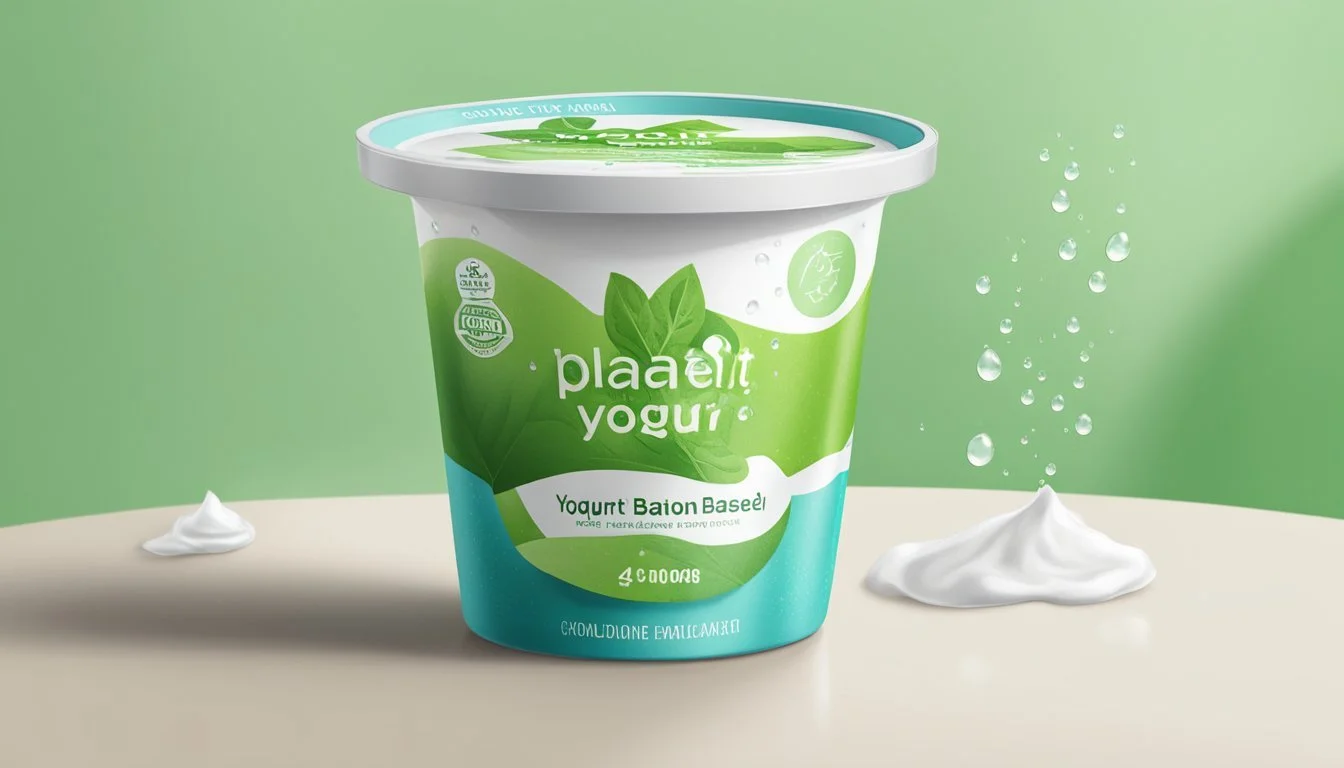Does Plant-Based Yogurt Go Bad?
Storage Tips and Shelf Life Explained
Plant-based yogurt, like its dairy counterpart, does go bad over time. The shelf life of plant-based yogurt is typically shorter than that of dairy yogurt, often ranging from one to two weeks if stored properly in the refrigerator. This is due to the natural ingredients and lack of preservatives in many plant-based options.
Factors influencing the spoilage of plant-based yogurt include the type of plant base used (such as almond, coconut, or soy), storage conditions, and whether the container has been opened. Unopened containers generally last longer, while exposure to air and contaminants can accelerate the spoiling process. It's important to check for signs of spoilage such as an off smell, mold, or a change in texture before consuming.
Understanding these factors can help you make the most out of your plant-based yogurt, ensuring it stays fresh and safe to eat. Proper storage and mindful consumption are key to enjoying these dairy-free alternatives while minimizing waste.
Understanding Plant-Based Yogurt
Plant-based yogurt offers diverse options derived from various non-dairy sources, providing alternatives for those avoiding animal products. These yogurts can differ significantly in ingredients and nutritional content, shaping their distinct characteristics.
Ingredients and Varieties
Plant-based yogurts are typically made using bases like almond milk, soy milk, coconut cream, or oats. Each base lends unique textures and flavors. For instance, almond milk yogurt is known for its light texture, while coconut cream gives a richer, creamier consistency. Some popular varieties include:
Almond Yogurt: Light and slightly nutty in flavor.
Soy Yogurt: Dense with a protein-rich profile.
Coconut Yogurt: Creamy with a tropical taste.
Oat Yogurt: Smooth and high in fiber.
These yogurts may also include additives such as gums and thickeners to improve texture.
Nutritional Profile
The nutritional content of plant-based yogurt varies depending on the main ingredient. Almond and cashew milk yogurts often contain healthy fats and proteins. Soy yogurt is notably protein-rich due to soybeans. Oat-based yogurts are high in dietary fiber, promoting digestive health.
A comparative nutritional assessment shows:
Type Protein (per serving) Fiber (per serving) Fat (per serving) Almond yogurt ~1-2g ~1-2g ~6-8g Soy yogurt ~4-6g ~2-3g ~3-5g Coconut yogurt ~1g ~1-2g ~7-10g Oat yogurt ~1-2g ~2-4g ~2-3g
Additionally, many plant-based yogurts are fortified with vitamins and minerals such as calcium and vitamin D to match the nutritional benefits of dairy yogurts.
Shelf Life and Preservation
Plant-based yogurt, like its dairy counterpart, has a limited shelf life and needs proper storage to extend its freshness. Both the expiration date and the way it is stored play crucial roles in preserving its quality.
Storage Guidelines
Plant-based yogurt should always be stored in the refrigerator at a temperature below 40°F. After opening, it is vital to seal the container tightly to prevent exposure to air, which can accelerate spoilage.
Unopened yogurt generally lasts longer than opened yogurt, retaining its quality up to the "best by" date.
When storing yogurt, keep it away from the refrigerator door, where temperature fluctuations are more common. Using airtight containers can further protect the yogurt from contaminants and odors from other foods.
Reducing exposure to light and air, especially for large containers, will compound its longevity, so portioning out servings in smaller, sealed containers may help.
Expiration Date and Freshness
The expiration date on plant-based yogurt is an essential indicator of its shelf life. Unopened plant-based yogurt typically lasts beyond the "best by" date, often 1-3 weeks, although quality may decline.
Once opened, the yogurt should ideally be consumed within 5-7 days. During this period, check for signs of spoilage such as mold, off-smells, and changes in texture. Mold or discoloration indicates that the yogurt should be discarded.
Storing opened yogurt at room temperature is not recommended, as it quickly moves into the "danger zone" (above 40°F), where bacterial growth can occur.
Following these guidelines will help maintain the freshness and safety of plant-based yogurt.
Identifying Spoilage
When assessing whether plant-based yogurt has gone bad, pay attention to both visual and olfactory indicators. The appearance, texture, and smell can help determine if the product is still safe to consume or if it has spoiled.
Visible Signs of Spoilage
Mold is one of the most obvious indicators that plant-based yogurt has gone bad. Check for any green, blue, or black spots forming on the surface. Discoloration, such as patches that are darker or lighter than the rest of the yogurt, can also suggest spoilage.
Another visible sign is separation. If the yogurt has a significant amount of liquid on top that doesn't mix back in easily, this could indicate it's past its prime. Inspect the container for bulging or leaking, as these can be signs of fermentation or bacterial growth.
Changes in Texture and Smell
Changes in texture are a clear sign of spoiled yogurt. Fresh plant-based yogurt should have a smooth, creamy consistency. If it has become lumpy, clumpy, or gelatinous, it is likely no longer good.
Smell is another critical factor. Spoiled yogurt often emits a sour, off, or pungent odor. If the yogurt smells anything other than fresh or slightly tangy, it likely has gone bad. Conduct a quick odor test by taking a whiff from a safe distance; a bad smell will be immediately noticeable.
Keep these signs in mind to avoid consuming spoiled plant-based yogurt, ensuring optimal health and safety.
Maximizing Yogurt's Benefits
Maximizing the benefits of plant-based yogurt involves incorporating it into a balanced diet and exploring creative uses in various recipes. Knowledge of the specific nutrients and health benefits can significantly enhance these efforts.
Inclusion in a Balanced Diet
Plant-based yogurt can be a nutritious part of a balanced diet. Many brands are rich in fiber, especially those made from oats or nuts. Choosing fortified options ensures an intake of vital vitamins and minerals like Vitamin D and calcium, which support bone health.
Probiotics in plant-based yogurt can enhance gut health by promoting beneficial microorganisms. It's also important to check the nutrition facts for protein content, as some varieties may be lower in protein compared to dairy yogurt. Pairing yogurt with high-protein foods like nut butters or seeds can help offset this.
Natural flavors and added fruits can improve taste and add additional vitamins. Opting for yogurts with minimal saturated fat and no artificial additives contributes to overall health. Those looking for vegan options should double-check for the use of no animal products.
Creative Uses in Recipes
Using plant-based yogurt creatively in recipes can add nutritional value and enhance flavors. It can be incorporated into smoothies with fruits and nut butters for a nutrient-dense breakfast. In baking, yogurt can substitute for butter or oil, reducing saturated fat content while adding moisture.
Yogurt can also be used as a base for dressings and dips, paired with herbs and spices for a flavorful and healthy alternative. For dessert, mixing yogurt with natural flavors like vanilla or cocoa, and layering with fruits and nuts can create a nutritious parfait.
In savory dishes, plant-based yogurt can serve as a marinade or topping, adding both creaminess and probiotics. These applications not only diversify meal options but also maximize the health benefits derived from the nutrients and microorganisms in plant-based yogurt.
Innovations in Plant-Based Yogurt Products
Recent advancements in plant-based yogurt products highlight innovations in processing methods and ingredient formulations, with brands focusing on enhancing nutritional profiles and sensory qualities.
Brand Comparisons and Developments
Kite Hill and Chobani have been at the forefront of these innovations. Kite Hill's almond yogurt emphasizes the use of locally sourced almonds and minimal additives, aiming for a clean label approach. Chobani, known for its dairy yogurts, has introduced a coconut yogurt line, appealing to consumers seeking alternatives to almond-based products.
Dannon has also jumped into the plant-based market, offering a range of yogurt alternatives made from oats, aiming to compete with traditional dairy yogurts in texture and taste. These products often include essential fortifications such as calcium and vitamin B12, important for those following a vegan diet.
Brands are continuously experimenting with high-pressure processing and fermentation techniques to improve the texture and mouthfeel of plant-based yogurts, making them more similar to their dairy counterparts.
Additives like stabilizers and thickeners play a crucial role in achieving the desired consistency in plant-based yogurts, ensuring that these products can meet consumer expectations in both flavor and texture.
Sustainable and Ethical Considerations
Plant-based yogurt offers several sustainable and ethical benefits compared to traditional dairy yogurt.
One major benefit is the reduction in greenhouse gas emissions. Producing dairy-free yogurt usually results in lower emissions since it avoids the methane emissions associated with dairy farming.
Another advantage is the decrease in land and water use. Plant-based ingredients generally require fewer resources to produce than animal products, making vegan yogurt a more sustainable option.
Animal welfare is a significant consideration. By choosing dairy-free yogurt, consumers are supporting practices that do not involve the exploitation of animals.
In terms of organic options, these products often promote better soil health and biodiversity. Organic farming practices can contribute to a healthier environment.
Consumers in the United States have shown an increasing interest in plant-based products due to their ethical and environmental benefits. This shift reflects a growing awareness of sustainable food choices.
Bullet Points:
Reduced greenhouse gas emissions
Lower land and water use
No animal exploitation
Support for organic farming
Growing consumer interest in the United States
Tables Example:
Benefit Plant-Based Yogurt Dairy Yogurt Greenhouse Gas Emissions Lower Higher Land Use Less More Water Use Reduced Greater Animal Welfare Not exploited Often exploited Organic Options Available Available, but less impactful
These aspects highlight the sustainable and ethical advantages of plant-based yogurt, aligning it with the evolving preferences of conscious consumers.







